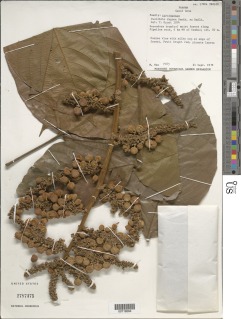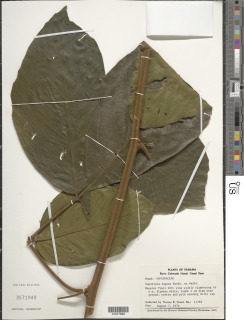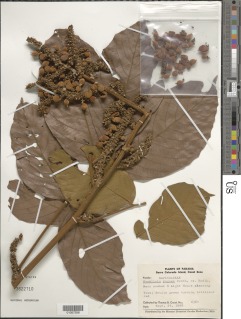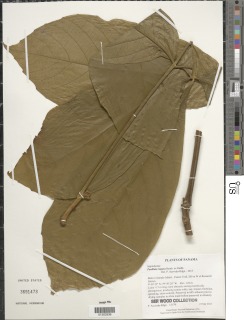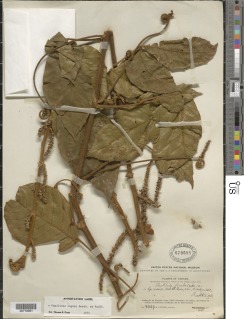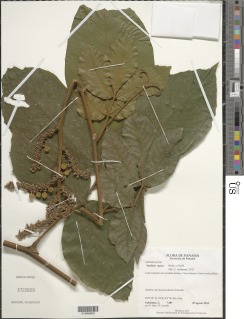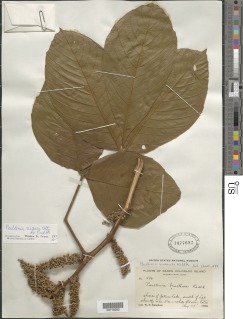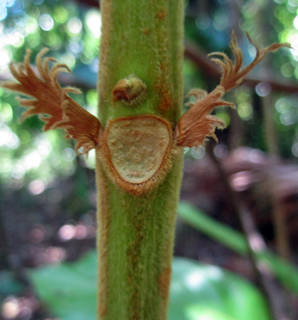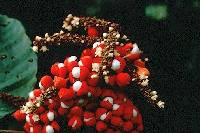

|
|
|
|
Family: Sapindaceae
|
Descripción: Plantas trepadoras o lianas con el tronco formado por cinco surcos longitudinales. Ramitas con pelos ferruginosos y savia lechosa, también con zarcillos saliendo de los nudos. Hojas imparipinnadas y alternas, con 5 folíolos, opuestos. Folíolos de 20-50 x 3-10 cm, ovados u obovados, con ápice acuminado, bordes dentados y base decurrente. Estípulas orbiculares de 1-2 cm de largo, fimbriadas y persistentes. Pecíolo y raquis sin alas. Inflorescencias axilares. Flores blancas. Frutos en cápsulas, de 1-2 x 1-1.5 cm, verdes, tornándose rojos al madurar. Semilla 1, arilo blanco. Especies Parecidas: A menudo se confunde con LK paulba Paullinia baileyi LK2 , pero en P. baileyi el raquis es alado y las ramitas son pubescentes. También se puede confundir con LK paulpt Paullinia pterocarpa LK2 , pero en P. pterocarpa las ramitas son glabras y las estípulas no son orbiculares y fimbriadas. P. fimbriata Radlk. Liana; stems 5-ribbed, obscurely so in age, ca 2-2.5 cm diam, with milky sap; stems, tendrils, petioles, and rachises bearing dense, reddish-brown, hirsute pubescence; tendrils stout, forked. Leaves pinnate; stipules semiorbicular, sericeous, to 1 cm diem, the margins fimbriate; petioles 5-18 cm long, terete; leaflets 5, opposite, broadly elliptic, acuminate, attenuate to rounded and sometimes inequilateral at base, 12-35 cm long, 7-17 cm wide, hirtellous above on veins, hirsute below especially on veins, bearing apiculate teeth at ends of lateral veins. Thyrses short, closely congested on slender bracteate spikelike inflorescences, simple and borne in axils or on tendrils or compound and terminal; flowers white, ca 3.5 mm long; sepals 5, unequal, tomentulose, orbicular or ovate and acute; petals 4, obovate, the scales with the lateral margin and the distal edge of appendage bearded, the crest orange, weakly lobed, the glands about as broad as long, sparsely pubescent, weakly concave on outside; stamens 8; filaments densely pubescent; ovary and outer surface of styles densely pubescent. Capsules bright red-orange, suborbicular, to 1.5 cm diem, +/- round in cross section, densely tomentose; seed solitary, subglobular, ca 1 cm diem, black, covered by a thin white aril. Croat 6036, 11783. Costa Rica to Peru and Brazil. In Panama, known from tropical moist forest in the Canal Zone and Colon and from premontane wet forest in the Canal Zone (Pipeline Road), Veraguas, and Panama (Cerro Jefe). |







